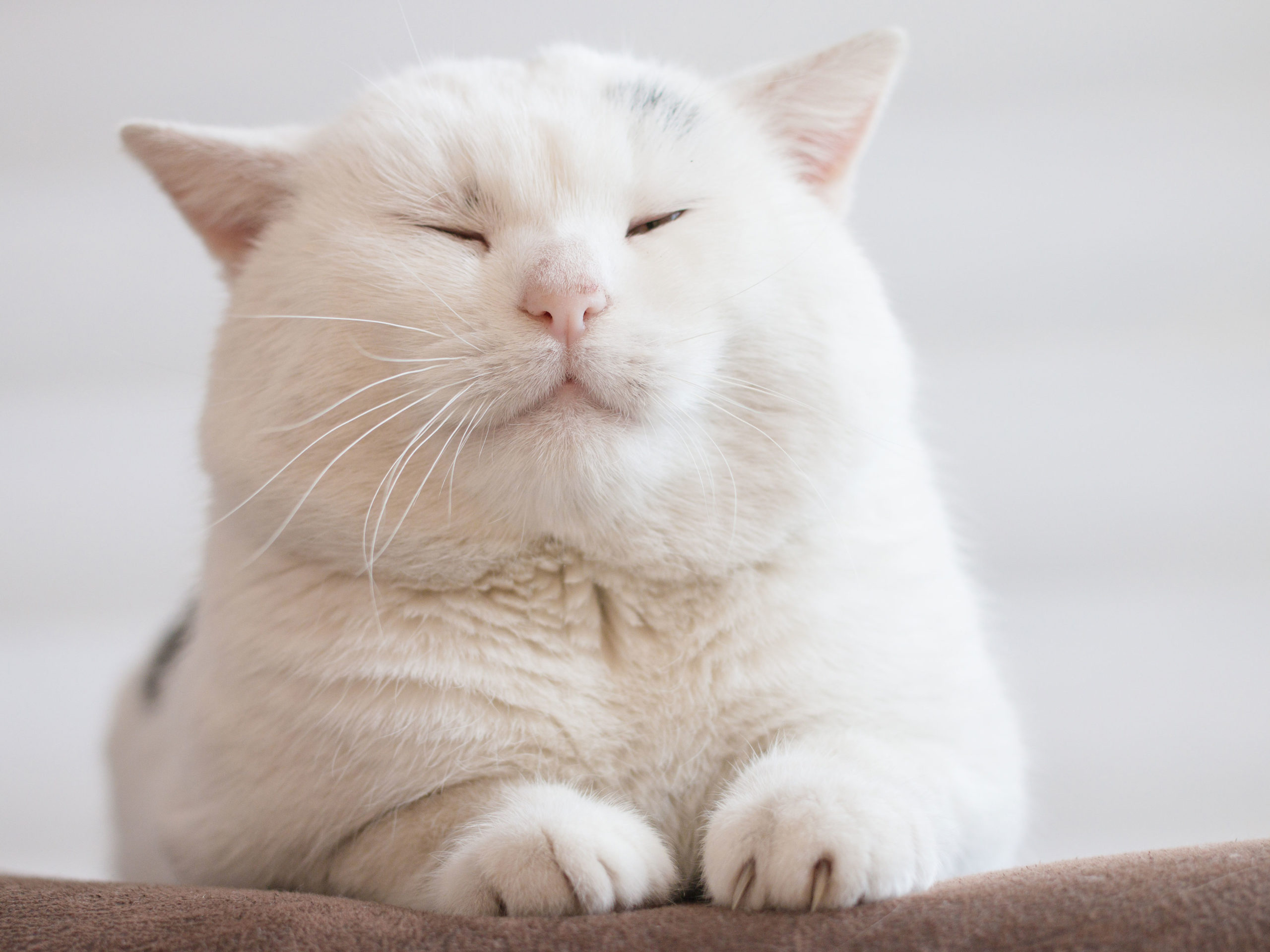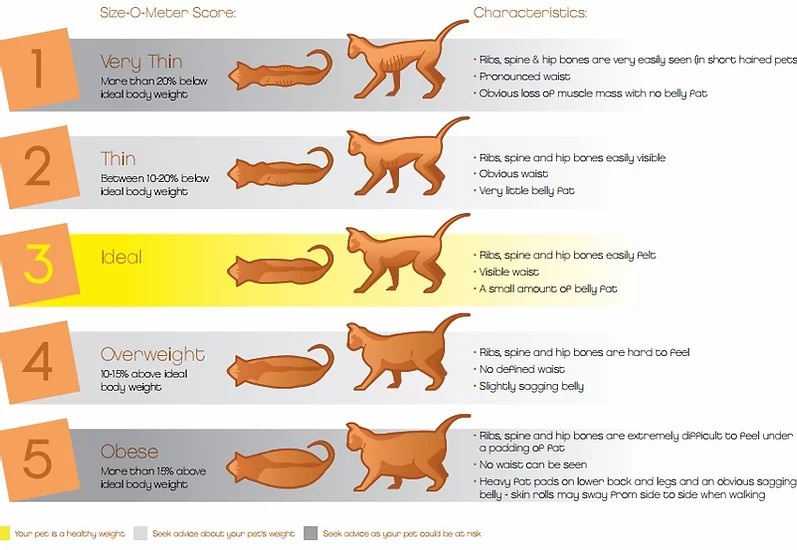Why obesity is bad
-
Respiratory Compromise
The obese pet has a good inch or two of fat forming a constricting jacket around its chest. This makes the pet less able to take deep breath as more work is required to move the muscles of respiration. Areas of the lung cannot fully inflate and coughing results. The pet also over-heats more easily. Many cases of tracheal collapse can be managed with only weight loss. -
Diabetes Mellitus
Extra body fat leads to insulin resistance in cats just as it does in humans. In fact, obese cats have been found to have a 50% decrease in insulin sensitivity. Weight management is especially important in decreasing a cat’s risk for the development of diabetes mellitus. -
Hepatic Lipidosis
When an overweight cat goes off food or partially off food because of illness or psychological stress, body fat is mobilized to provide Calories. Unfortunately, the cat’s liver was not designed to handle a large amount of body fat for processing. The liver becomes infiltrated with fat and fails. A stress that might have been relatively minor, such as a cold, becomes a life threatening disaster. -
Reduced Life Span
-
Increased Surgical/Anesthetic Risk
Obesity poses an extra anesthetic risk in that drug dosing becomes less accurate. (It is hard to estimate a patient’s lean body mass for drug dosing if it is encased in a fat suit). Further, anesthesia is inherently suppressive to respiration and adding a constrictive jacket of fat as mentioned only serves to make proper air exchange more challenging. And still further, surgery in the abdomen is hampered by the slippery nature of the extra fat as well as difficulty visualizing all the normal structures through the copious fat deposits that have accumulated. One never knows when a pet will require an emergency surgery (to say nothing of regular teeth cleanings).

WHAT CAN BE DONE: DIET AND EXERCISE
-
This sounds simple but in fact when one simply tries to cut back on food, it just does not seem to work. As with humans, a more formal approach seems to work best. This means feeding a prescription diet made for weight loss, feeding a measured amount, and coming in for regular weigh-ins at the vet’s office. This means:
-
There must be control over what the obese pet eats. Easy enough if there is only one pet and roaming is not allowed but trickier if there is more than one pet in the home. Use your ingenuity to feed the pets separately.
-
Feed in meals. Leaving food out encourages snacking plus feeding in meals makes it easier to feed multiple pets different foods or different amounts of food.
-
Be committed to regular weigh ins. Know what the goal weight is and how long it should take to reach this goal/or how to tell if the pet is on target. It is important not to try to go too fast. If the weight loss is not on track, sometimes it is necessary to feed more rather than less. Your veterinarian will be in contact with the clinical nutritionists at the pet food company so as to make the best recommendations.
-
Consider interactive toys that can be used when you are not home or where your own participation is minimal. Be sure to rule out health issues that might specifically cause obesity as an initial step in obesity management.

